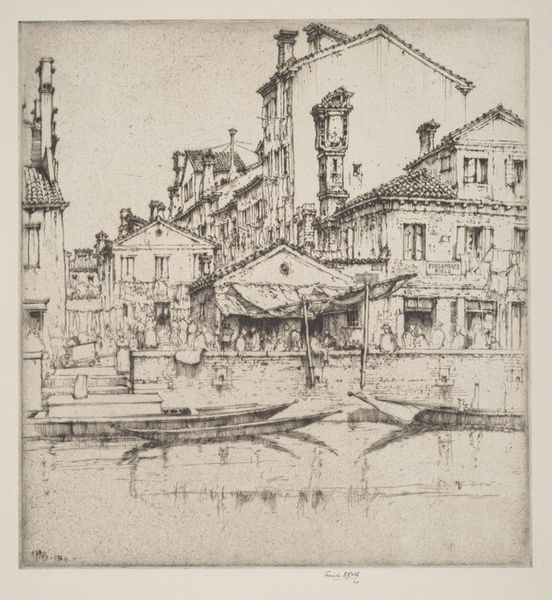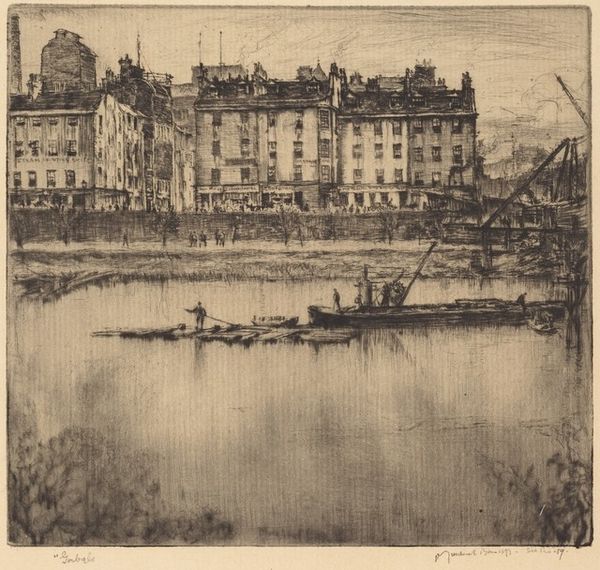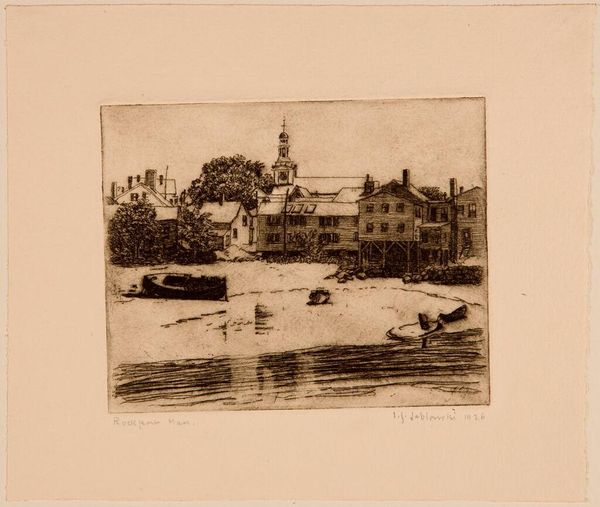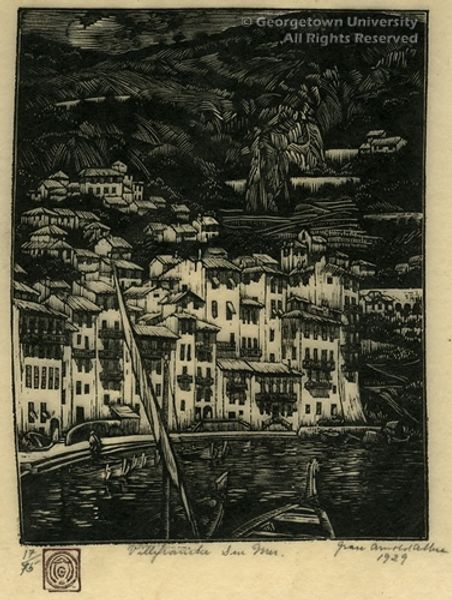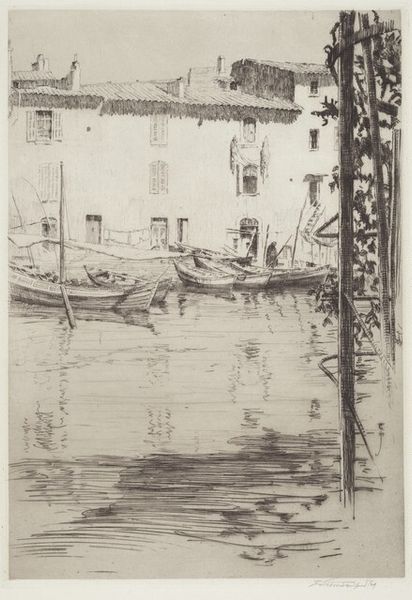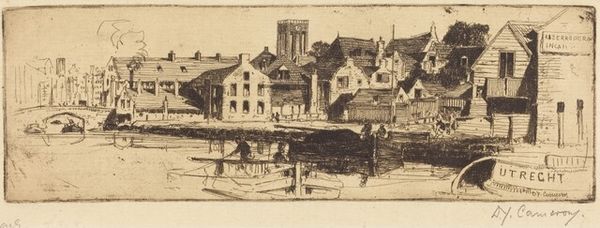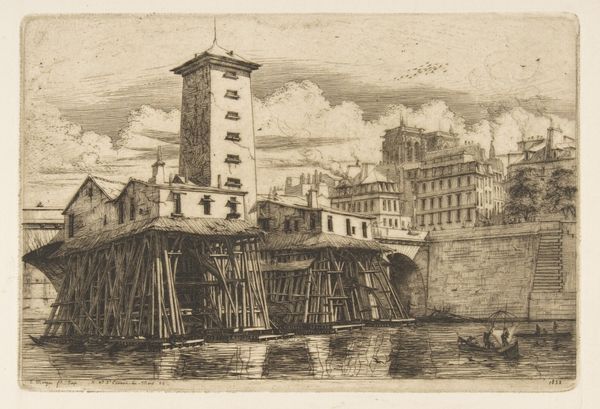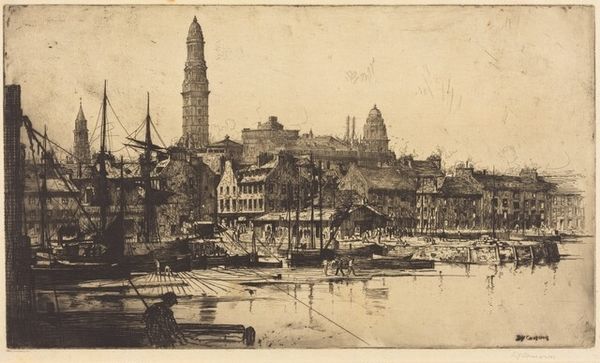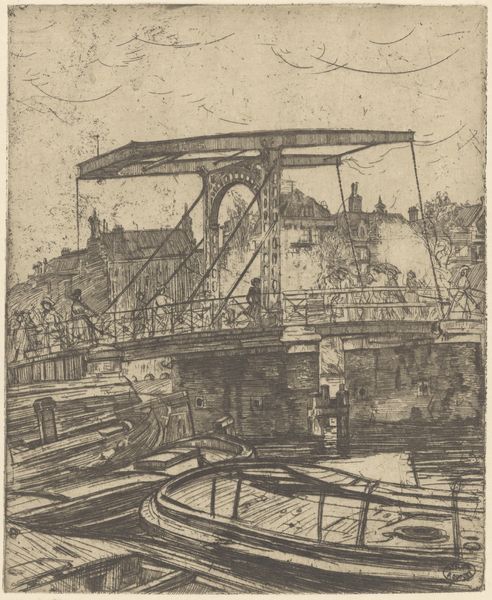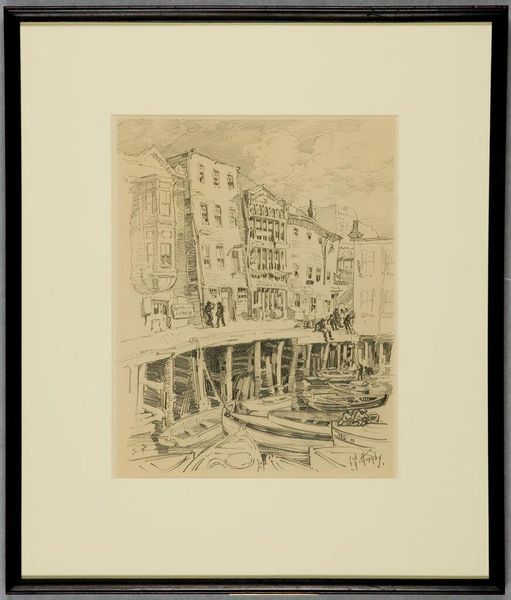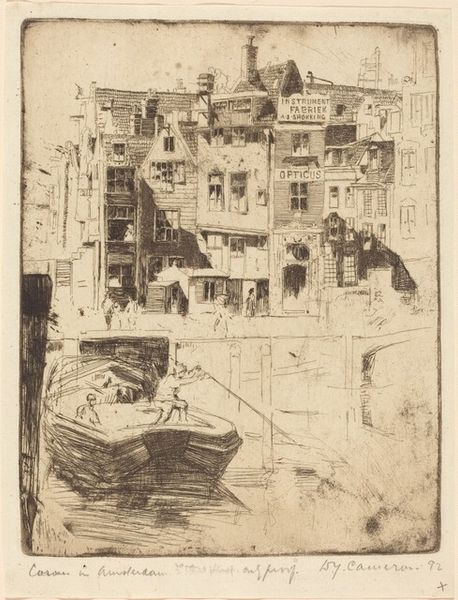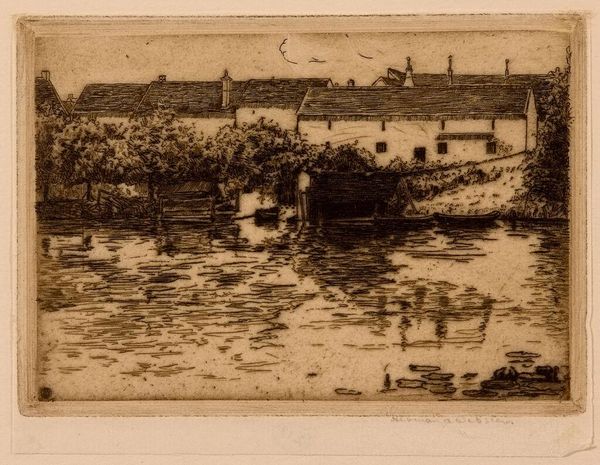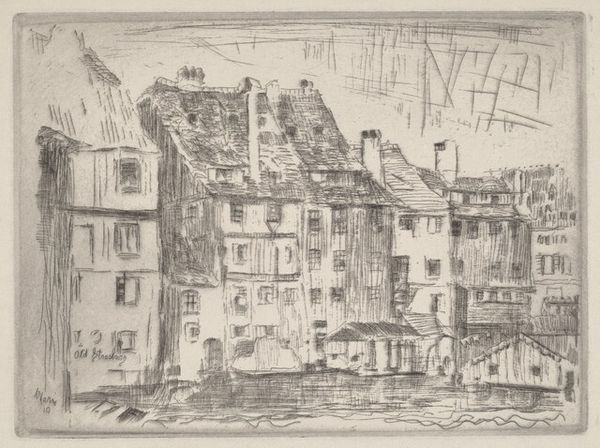
print, etching, intaglio
#
venetian-painting
# print
#
etching
#
intaglio
#
landscape
#
figuration
#
geometric
#
cityscape
#
realism
Copyright: National Gallery of Art: CC0 1.0
Editor: Here we have Jules André Smith's "A Venetian Byway," created as an etching. The composition, with the buildings framing the canal, has an almost theatrical feel to me, like a stage set. How do you interpret this work? Curator: That's a great observation. Etchings like this, depicting Venice, were immensely popular with tourists and collectors in the late 19th and early 20th centuries. Consider the way Smith positions us, the viewers. He places us not *in* the scene, but rather *observing* it. Why do you think he does that? Editor: Maybe to highlight the distance between the viewer and the lived reality of Venice? To underscore its exoticism, for a primarily Western audience? Curator: Precisely. Prints like these contributed to a carefully constructed image of Venice as a timeless, romantic locale, often at odds with its socio-economic realities. The focus is on aesthetic pleasure, sanitizing potentially complex social and economic factors for a consumer audience. Note how the working boats are picturesque, almost props within the image. It is Venice filtered through a particular lens. Editor: So, it's not necessarily a straightforward depiction but also a commentary on how Venice was being marketed and consumed at the time? Curator: Exactly. The artwork reveals much about the dynamics of cultural tourism and how images are used to shape perception. These Venetian prints, while beautiful, were commodities. Editor: It’s fascinating to consider the cultural baggage an image can carry, even something seemingly as simple as a landscape. Curator: Indeed. Analyzing art through the lens of its production and consumption reveals hidden layers of meaning and social context.
Comments
No comments
Be the first to comment and join the conversation on the ultimate creative platform.
